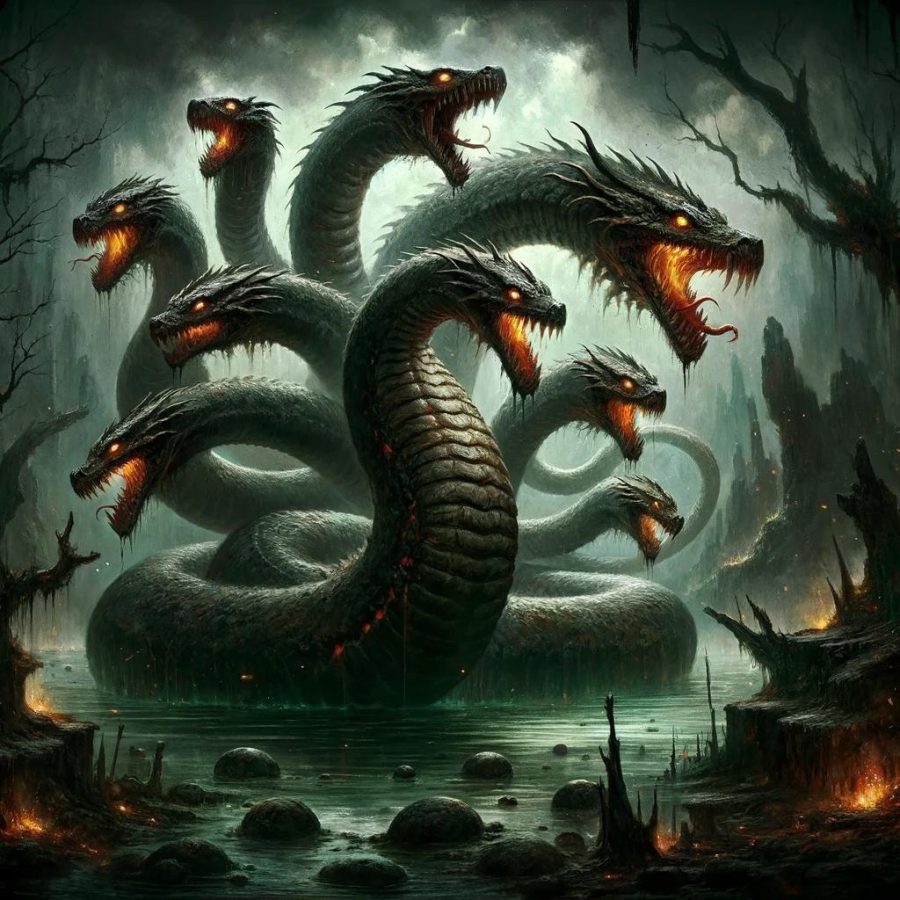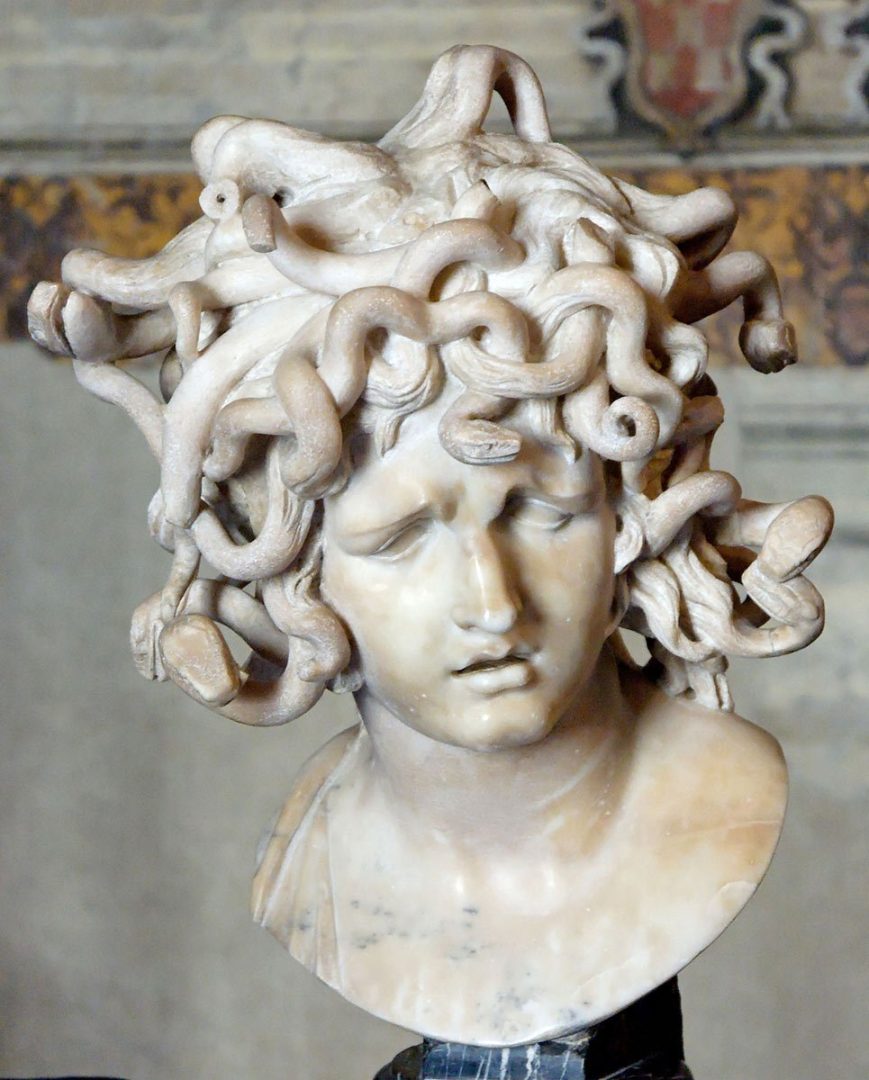Greek Mythology’s Scariest Monsters: A Pantheon of Horror

The ancient Greeks knew a thing or two about horror, creating a pantheon of nightmarish creatures that have endured through the ages, all deeply intertwined with the gods and heroes. From the slithering Hydra to the impenetrable Nemean Lion, these monstrous beings represent the chaotic, often violent forces at play in Greek mythology. They’re more than just creatures—they’re reflections of humanity’s deepest fears and ultimate challenges. Let’s dive into a few of these legendary horrors and discover why they’ve haunted us for centuries.
Typhon and Echidna: Parents of the Apocalypse
Few creatures match the terror of Typhon, known as the “Father of All Monsters.” With a hundred dragon heads and a fury that could rattle Olympus, he waged an epic battle against Zeus, representing the eternal clash of chaos and order. His mate, Echidna, known as the “Mother of Monsters,” birthed a horrific lineage: her children include the Nemean Lion, Hydra, Cerberus, and the Chimera, each a beast worthy of horror in its own right.
The Minotaur: Terror in the Labyrinth
In one of mythology’s most haunting tales, the Minotaur—a monstrous half-man, half-bull—was born from the union of Queen Pasiphae and a majestic bull sent by Poseidon. Confined to a labyrinth, he symbolized the price of defying the gods. Each year, Athens sent sacrificial youths to appease this horror until Theseus, with the help of Ariadne’s thread, managed to slay the creature. The Minotaur’s story endures as a metaphor for punishment, power, and the heroic journey.
Medusa: The Gorgon’s Gaze
Once a beautiful maiden, Medusa was cursed by Athena, transforming her into a snake-haired creature whose gaze turned men to stone. She embodied both beauty and terror, wielding a power that ultimately led to her demise at the hands of Perseus, who used a mirrored shield to avoid her deadly stare. Even in death, her head retained its power, adorning Athena’s shield as a potent symbol of protection.
Hydra: Serpent of Regeneration
 The multi-headed Hydra, lurking in the swamps of Lerna, was famous for its regenerative abilities. For every head severed, two more grew in its place, symbolizing the persistence of challenges that seem insurmountable. Hercules’ victory over the Hydra in his Twelve Labours—with help from Iolaus and a blazing torch—represents the triumph of cunning and endurance against overwhelming odds.
The multi-headed Hydra, lurking in the swamps of Lerna, was famous for its regenerative abilities. For every head severed, two more grew in its place, symbolizing the persistence of challenges that seem insurmountable. Hercules’ victory over the Hydra in his Twelve Labours—with help from Iolaus and a blazing torch—represents the triumph of cunning and endurance against overwhelming odds.
Cerberus: Guardian of the Underworld
With three heads, a serpent’s tail, and serpents writhing from his body, Cerberus is a formidable sentinel, guarding the gates of Hades. His role as keeper of the underworld establishes him as a symbol of boundaries—the impenetrable line between life and death. Cerberus’ role in the myths, including his encounter with Hercules, reminds us of the inevitable journey to the unknown that awaits all.
The Sirens: Alluring Voices of Death
These beautiful yet deadly beings with the bodies of birds and faces of women seduced sailors to their doom with an irresistible song. Odysseus, forewarned by Circe, famously evaded their lure by plugging his crew’s ears with beeswax, himself lashed to the mast to hear the fateful melody safely. The Sirens’ story is a cautionary tale of temptation, highlighting the delicate balance between curiosity and survival.
Chimera: The Fire-Breathing Fusion
With the body of a lion, a goat’s head protruding from its back, and a serpent for a tail, the Chimera is the embodiment of nature’s fury. Its fiery breath and composite form symbolize the unpredictable, lethal power of nature. Bellerophon’s defeat of the Chimera while riding Pegasus stands as one of mythology’s great feats, exemplifying the heroic ability to overcome even the most fantastical dangers.
Scylla and Charybdis: The Strait of Terror
Perched on opposite sides of a narrow sea passage, Scylla and Charybdis represent the deadly perils of ancient seafaring. Scylla, a multi-headed monster, would snatch sailors from ships, while Charybdis, a massive whirlpool, swallowed entire vessels. Navigating between these two horrors became a metaphor for tough choices and unavoidable challenges, with their most famous survivor, Odysseus, embodying the hero’s resilience in the face of existential threats.
The Nemean Lion: The Indestructible Beast
With its impenetrable hide, the Nemean Lion was an unbeatable foe until Hercules tackled it barehanded, in the first of his Twelve Labours. Its defeat marked Hercules as a hero of unparalleled strength and resourcefulness, underscoring the theme of triumph over seemingly unconquerable adversity.
The monsters of Greek mythology remain powerful symbols of humanity’s fears, resilience, and fascination with the supernatural. Each creature reveals the balance between chaos and order, the allure of power, and the heroic struggle against the unknown—eternal themes that continue to inspire and haunt our imaginations.








